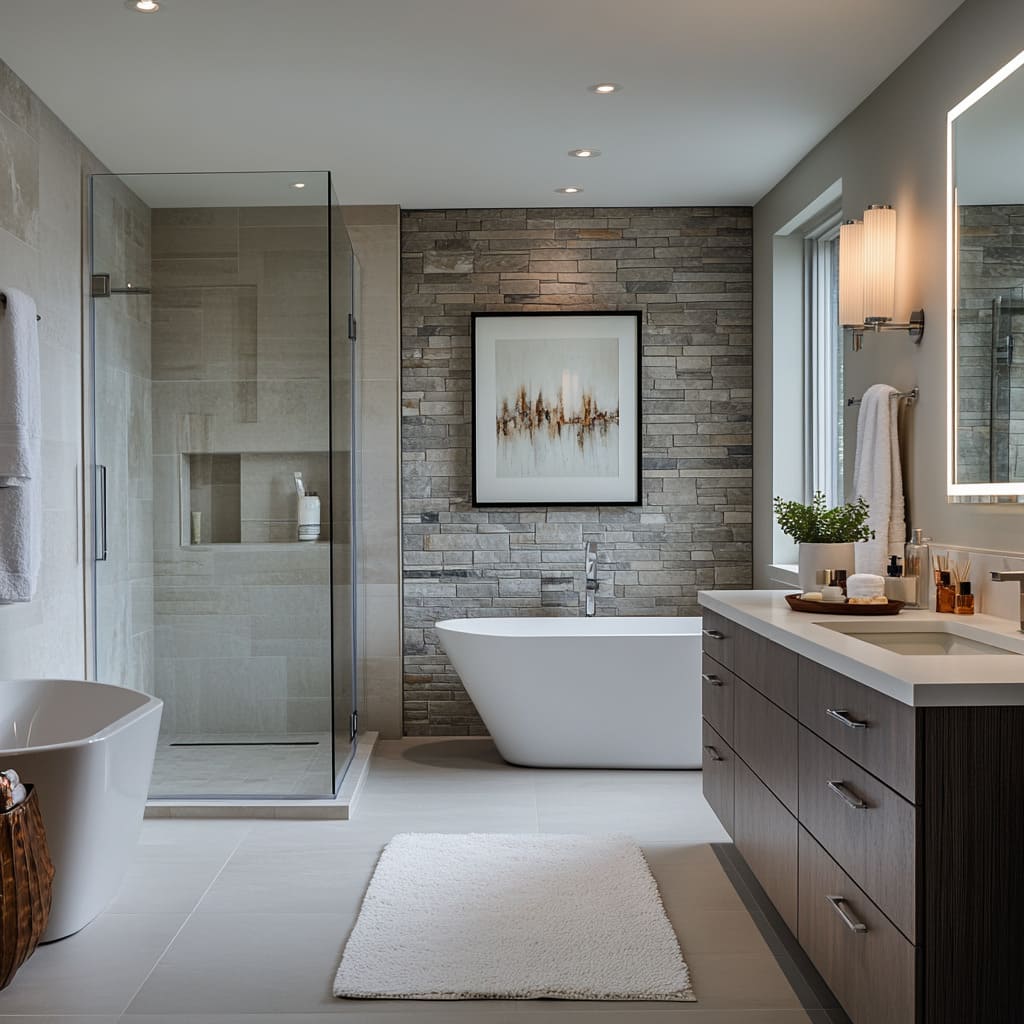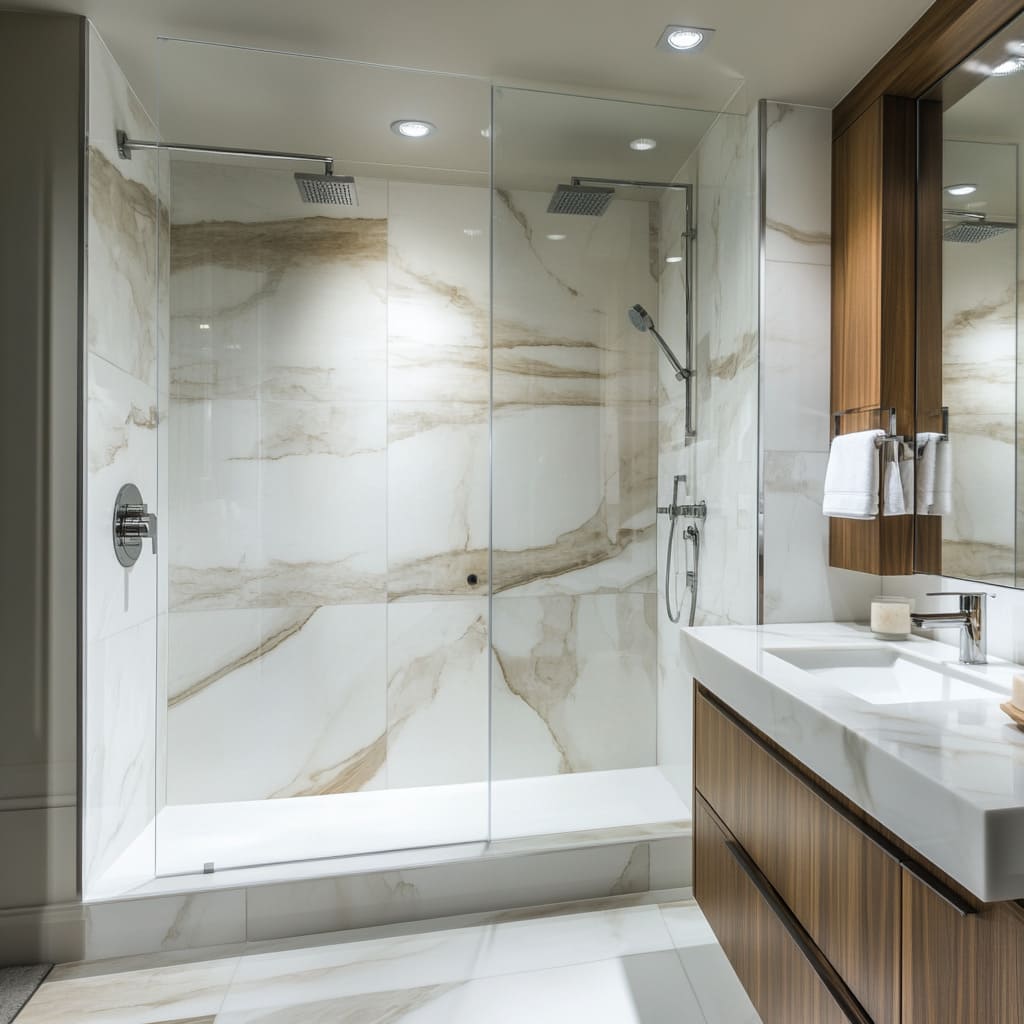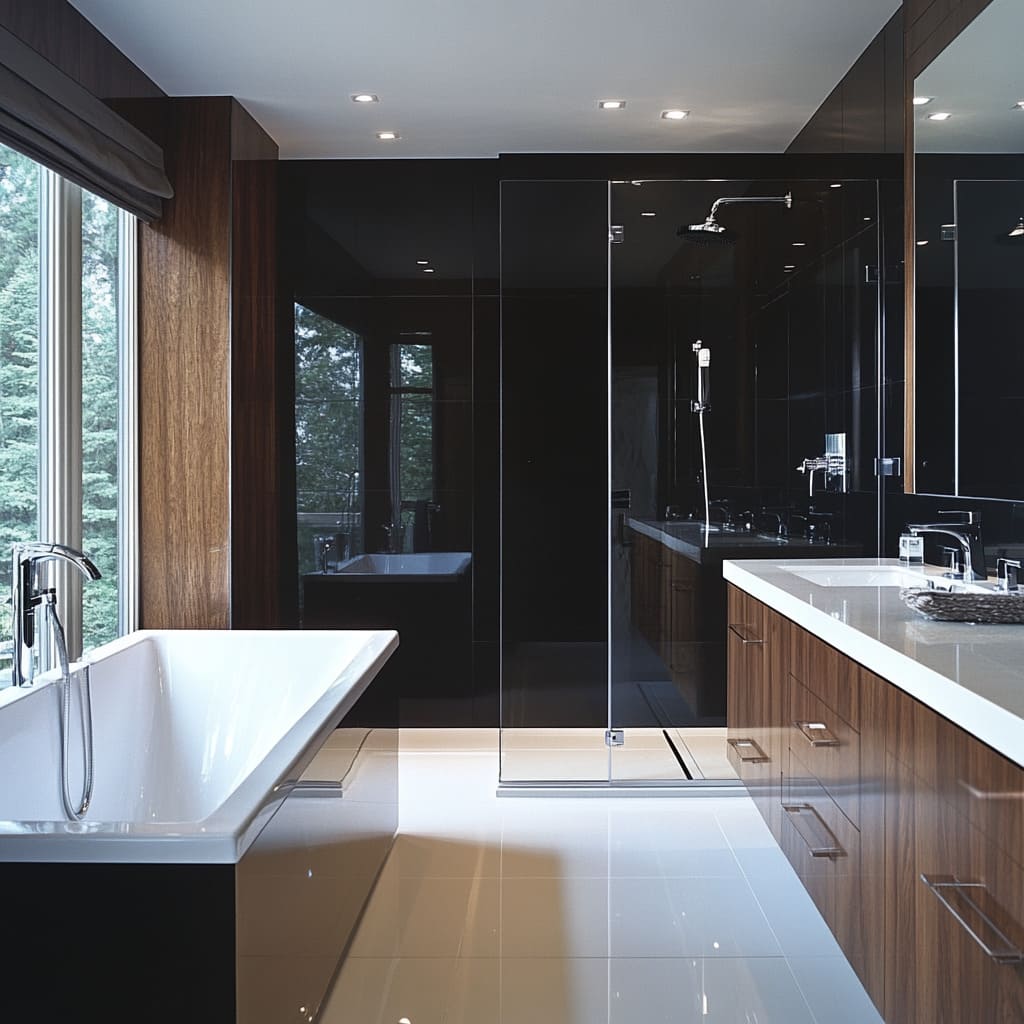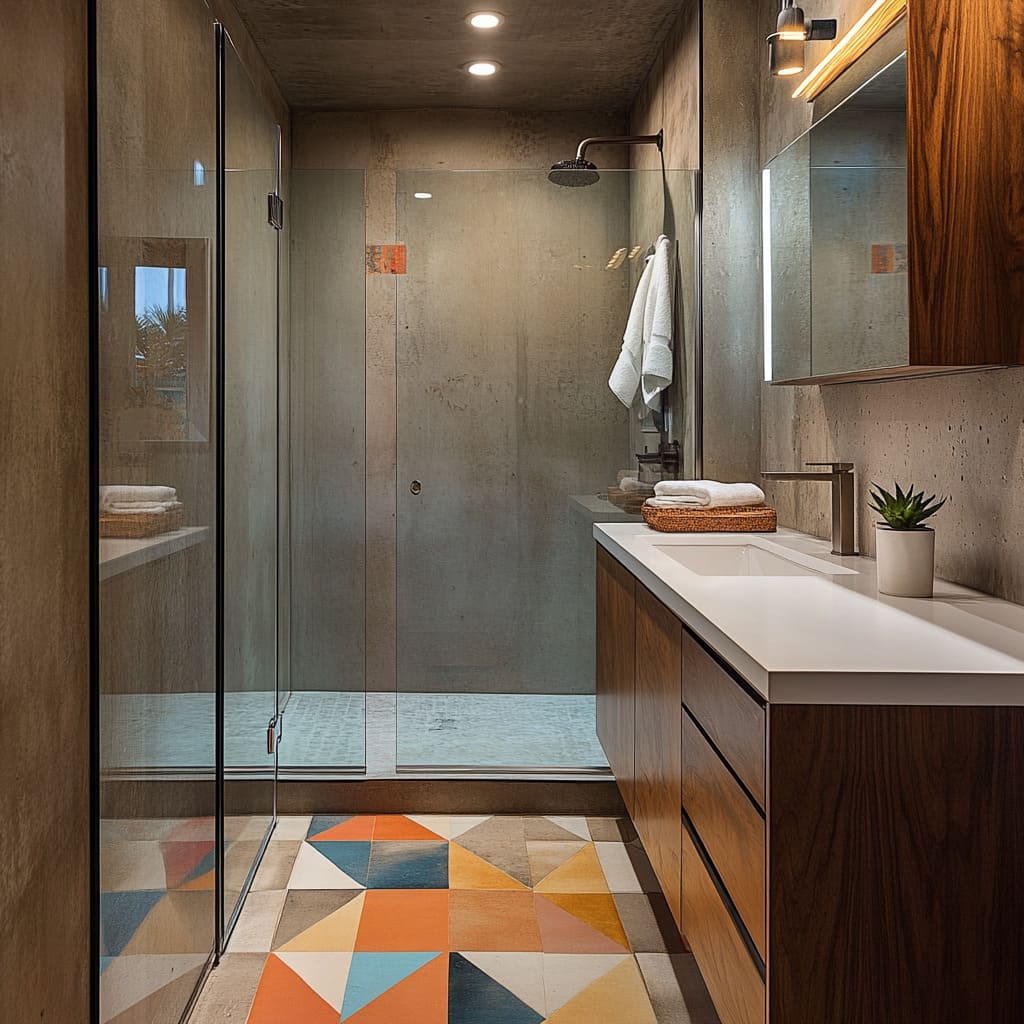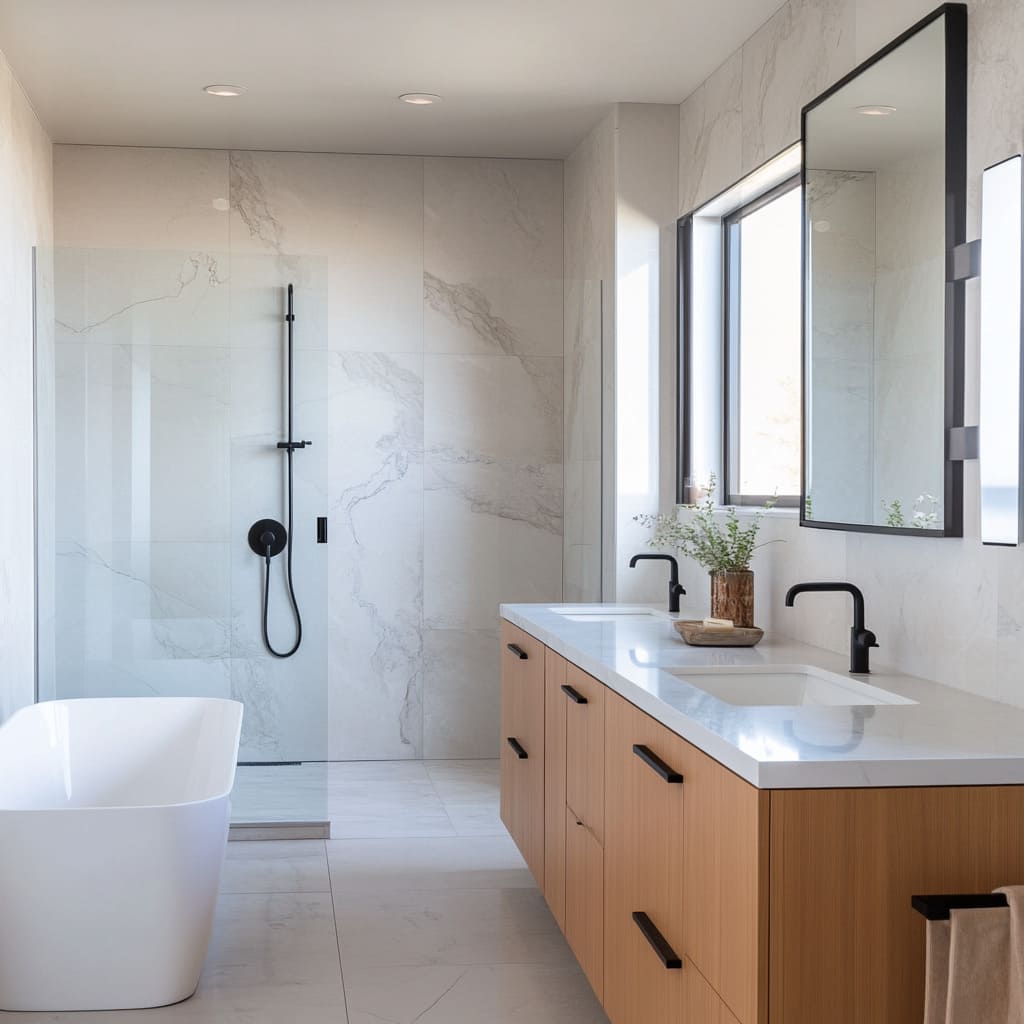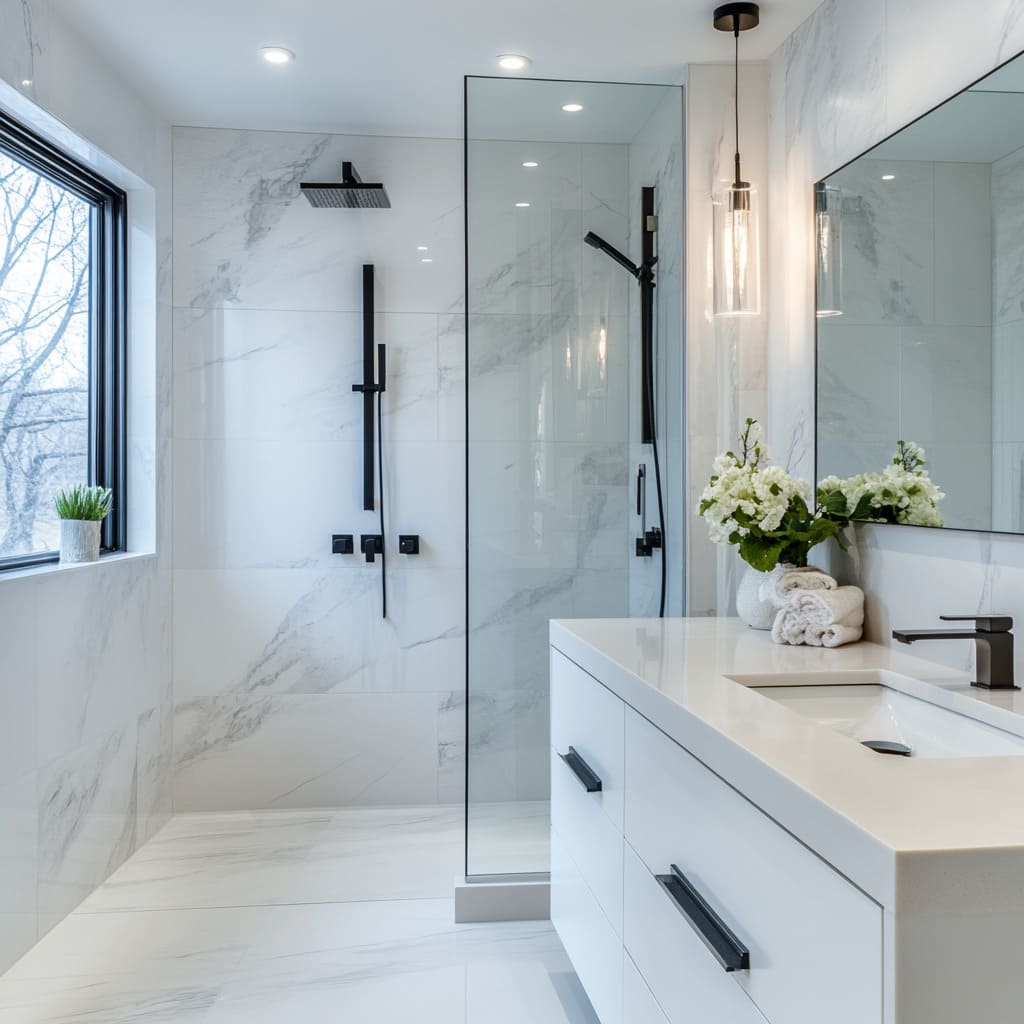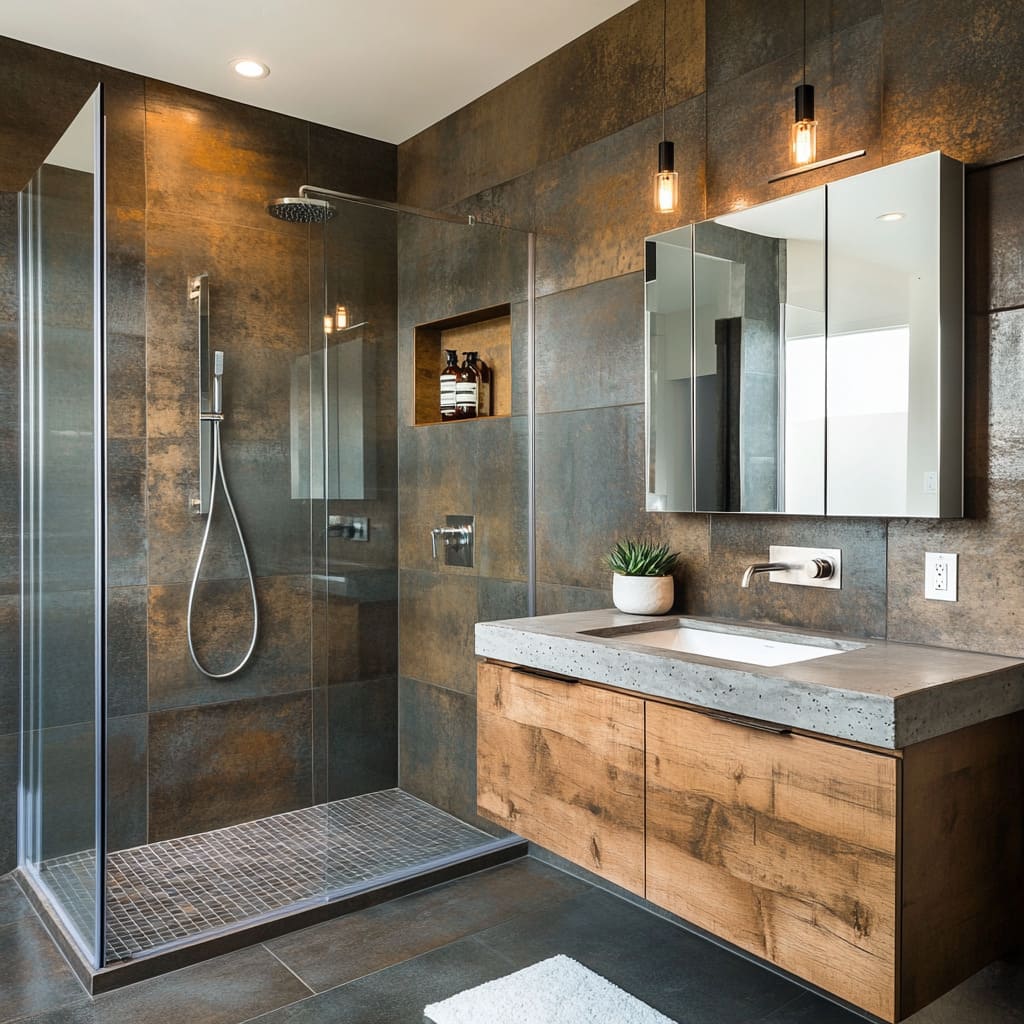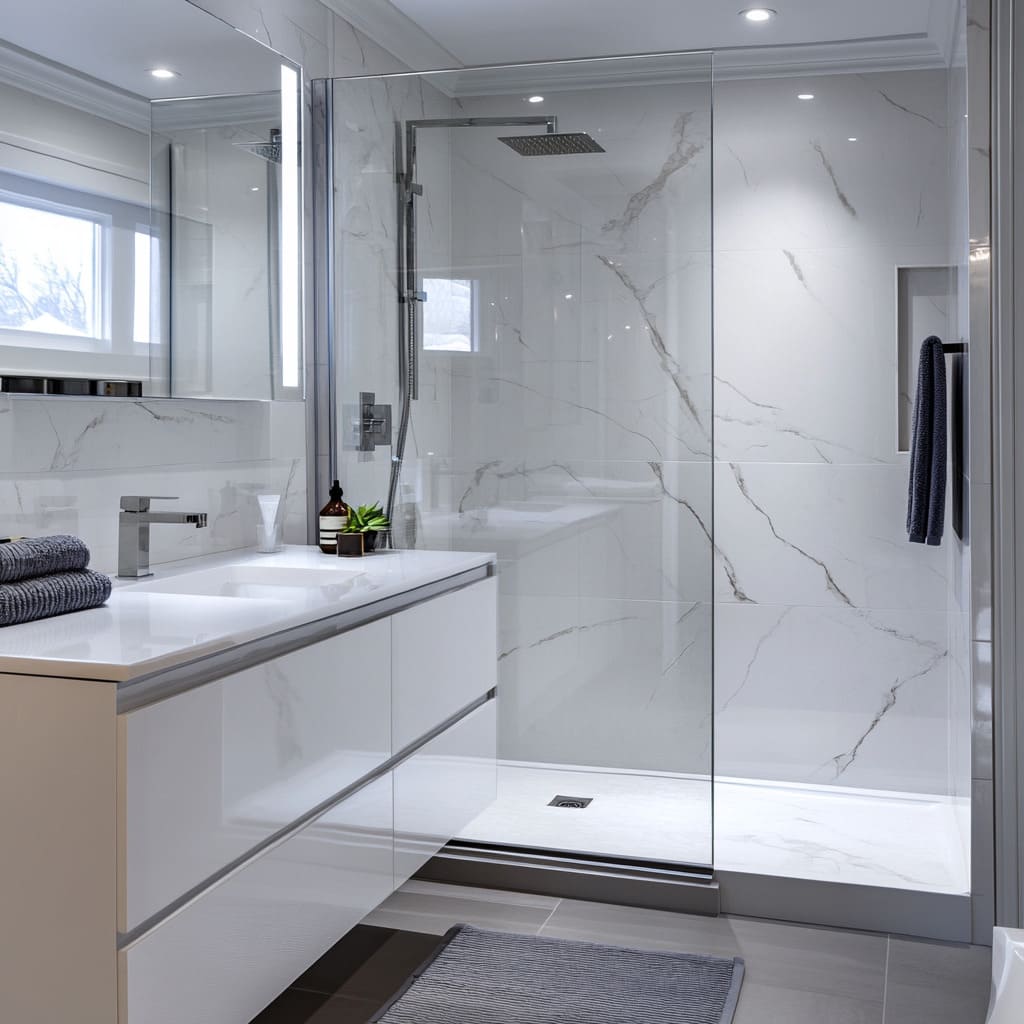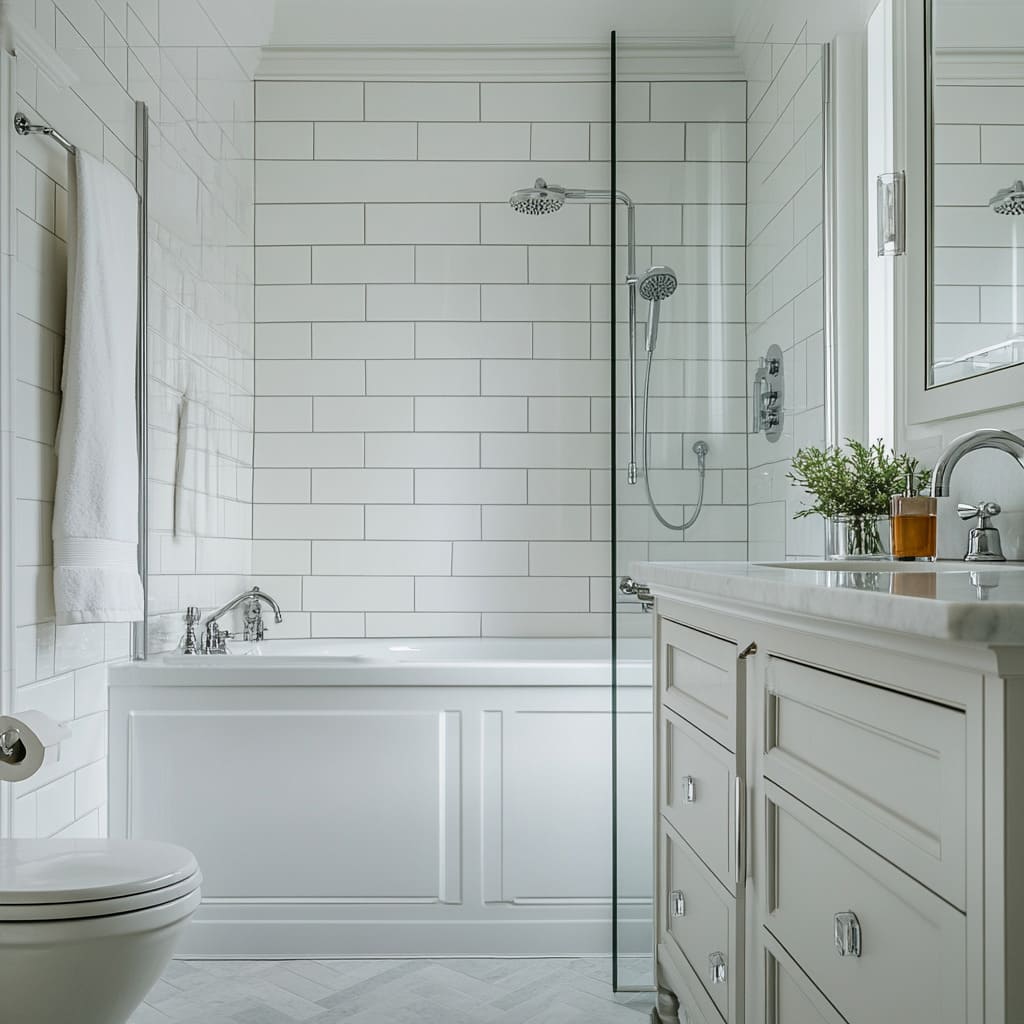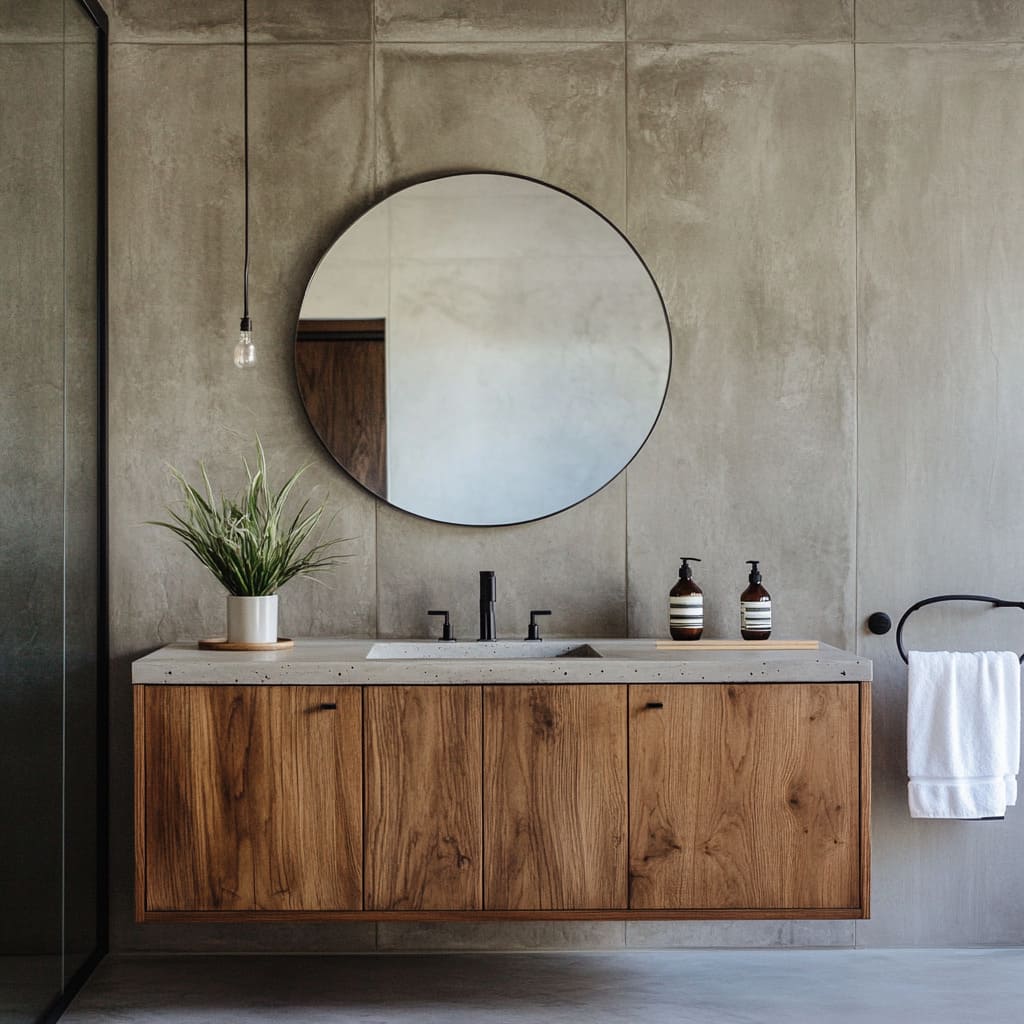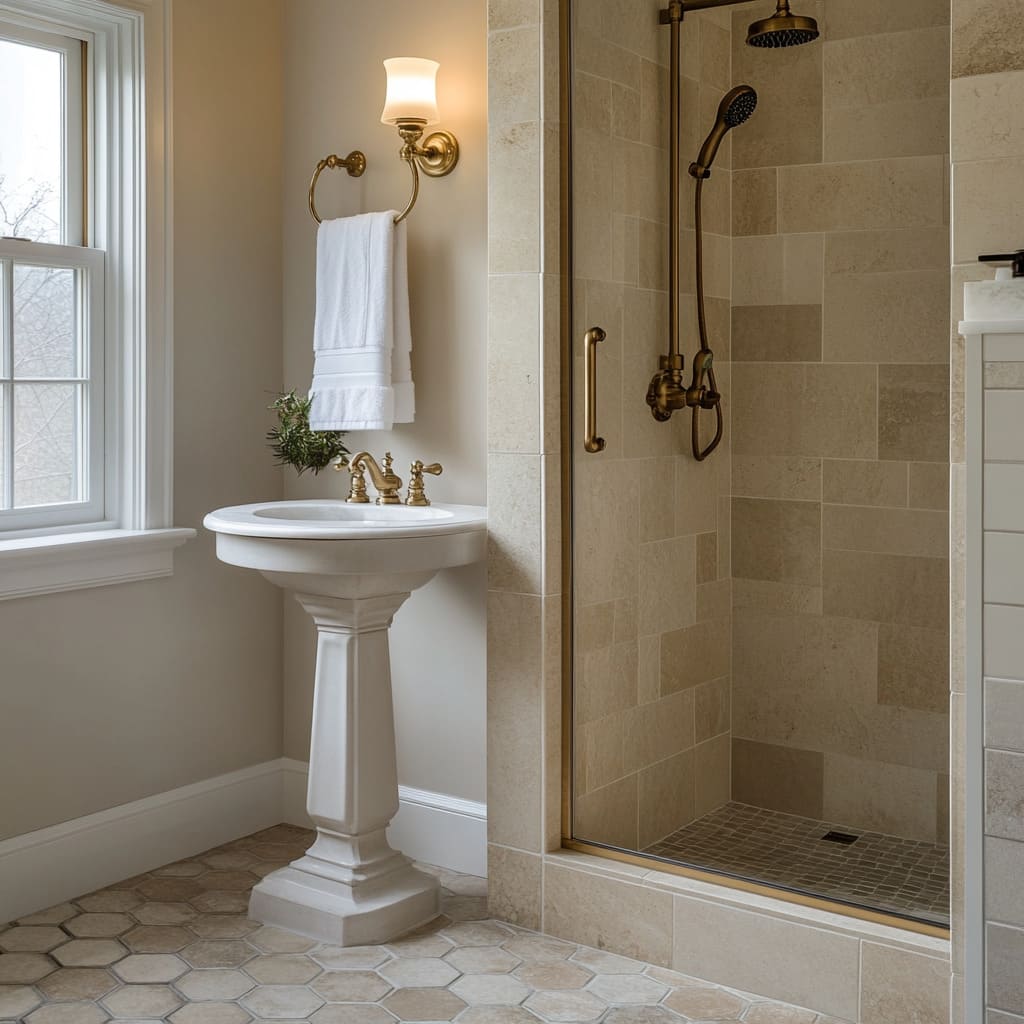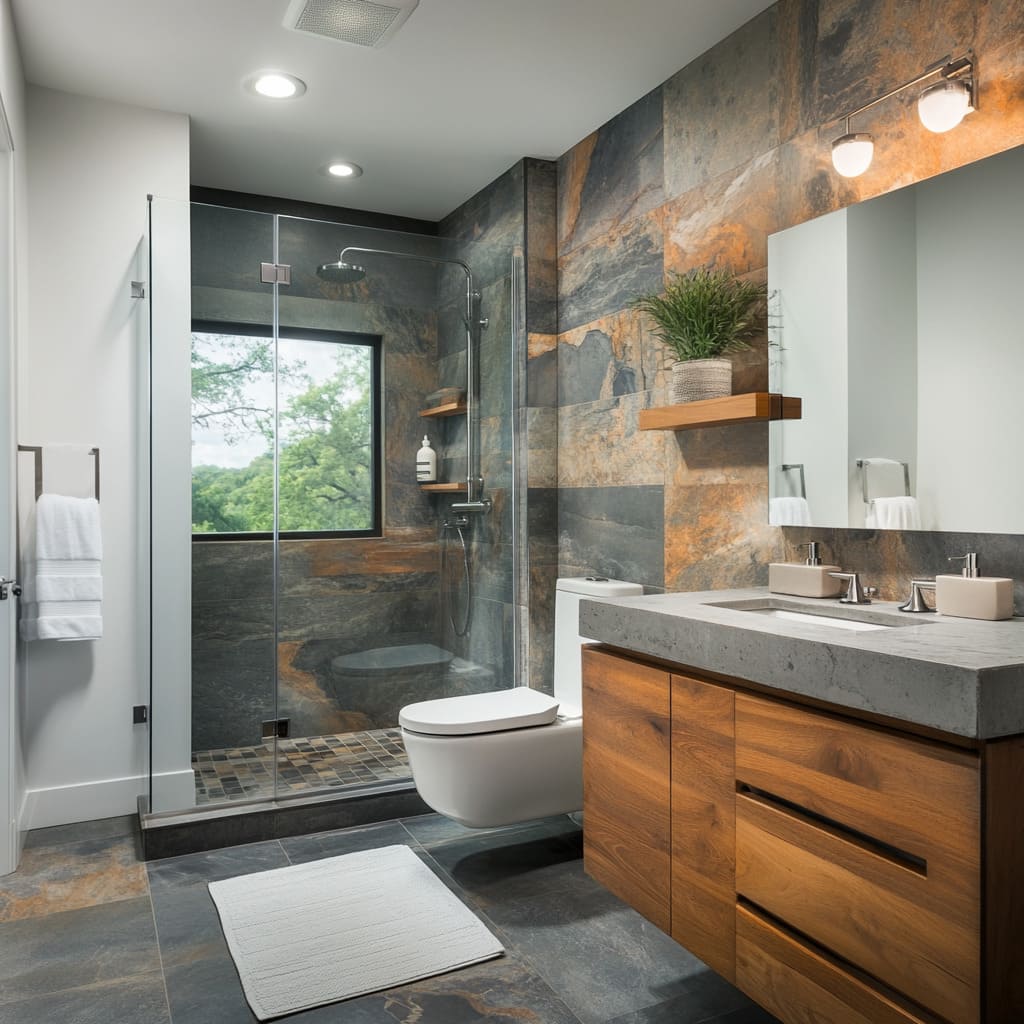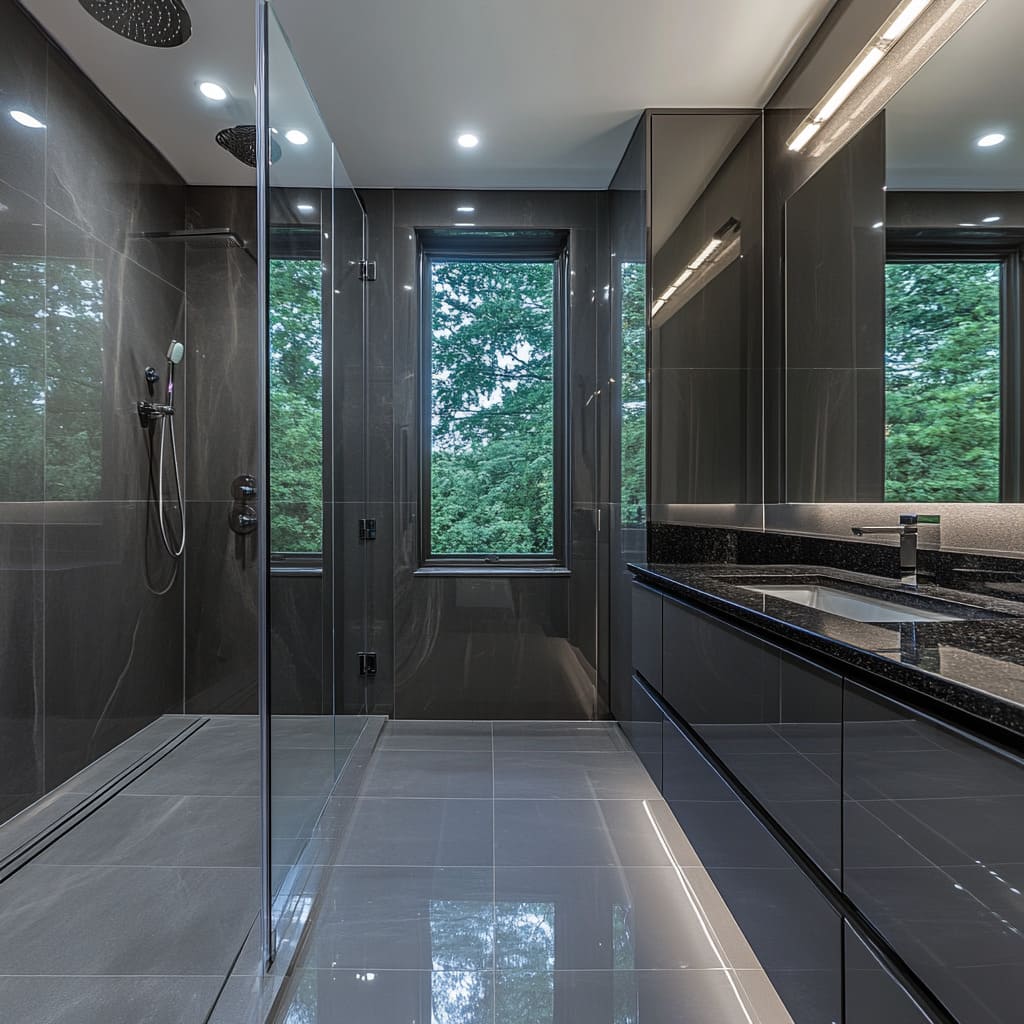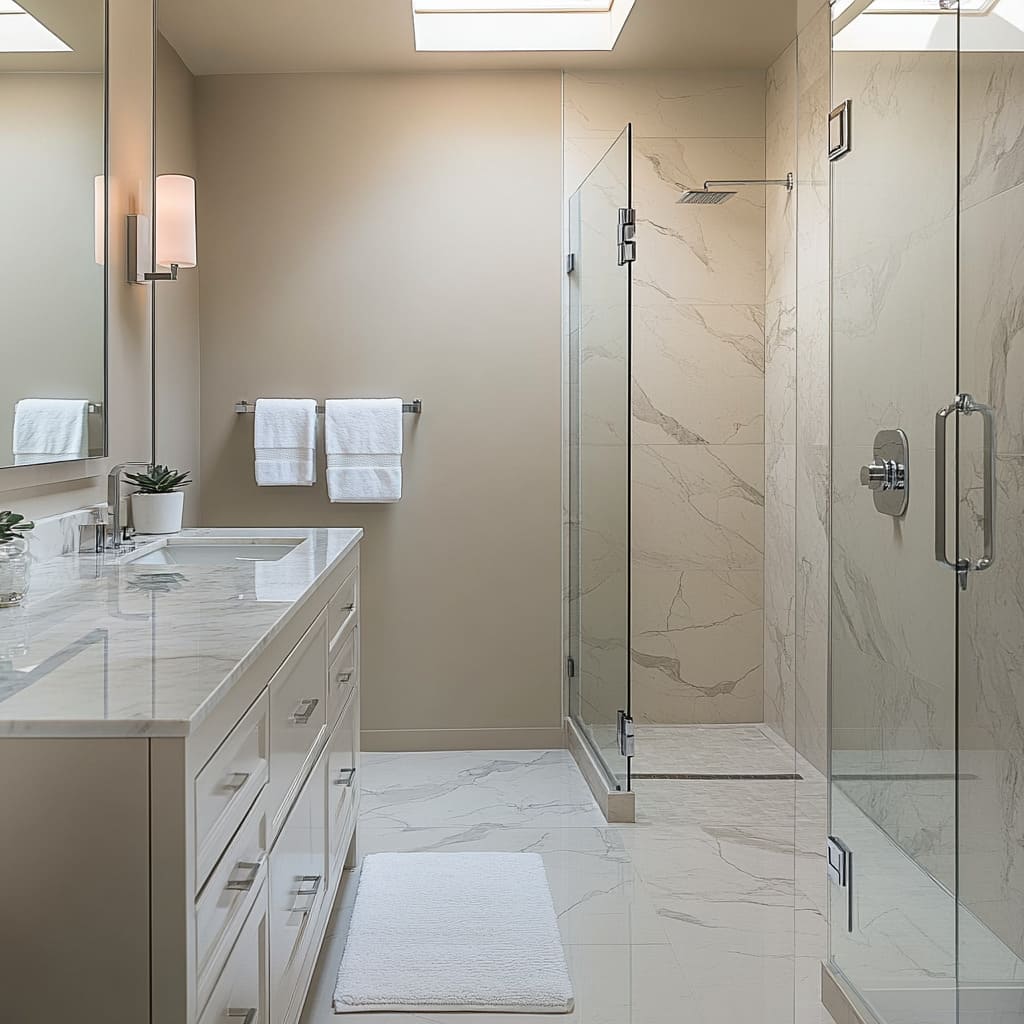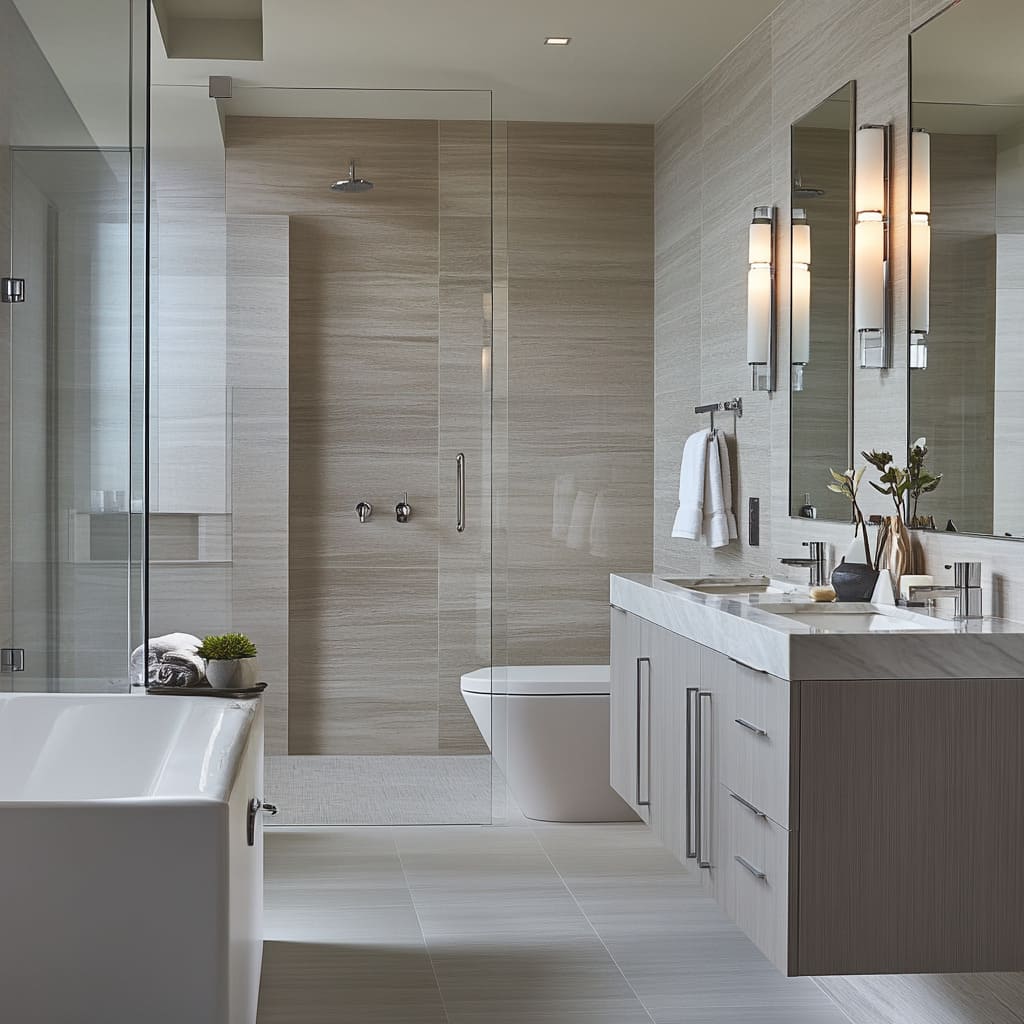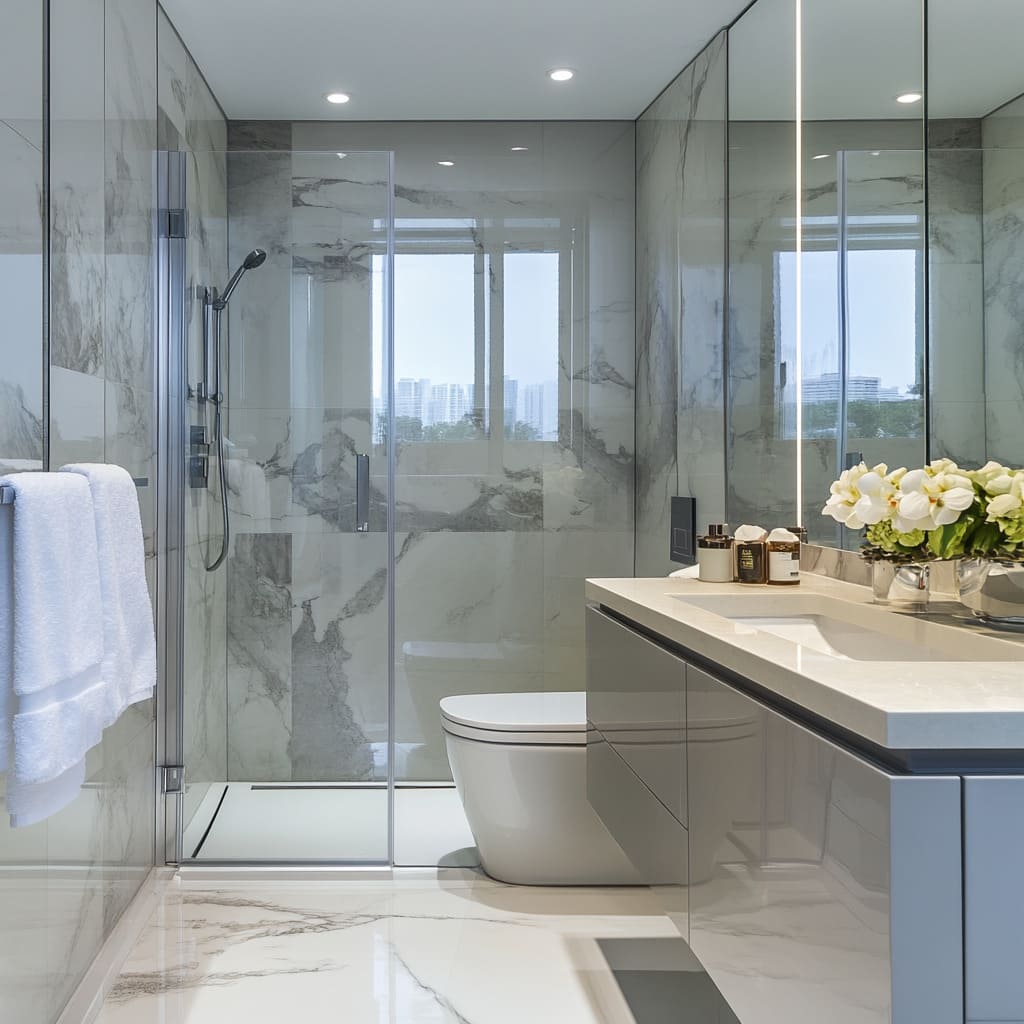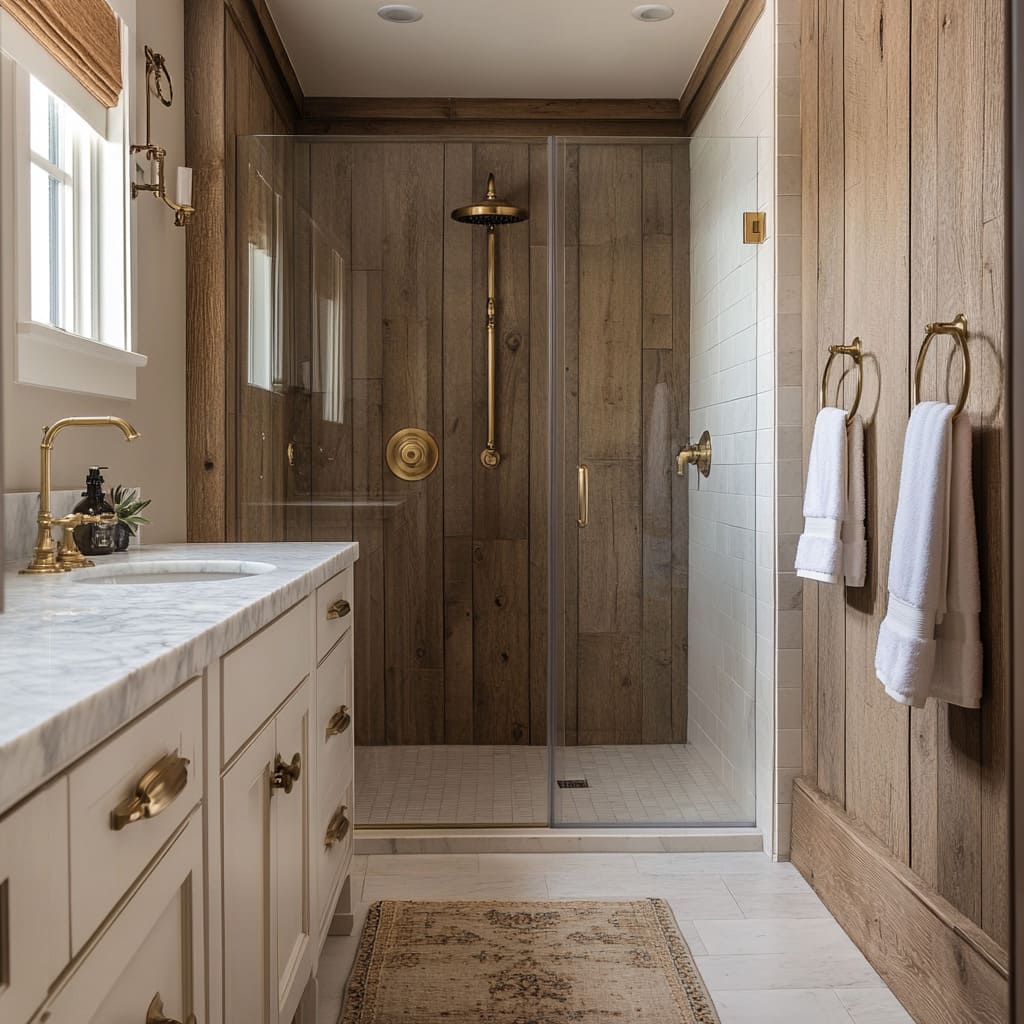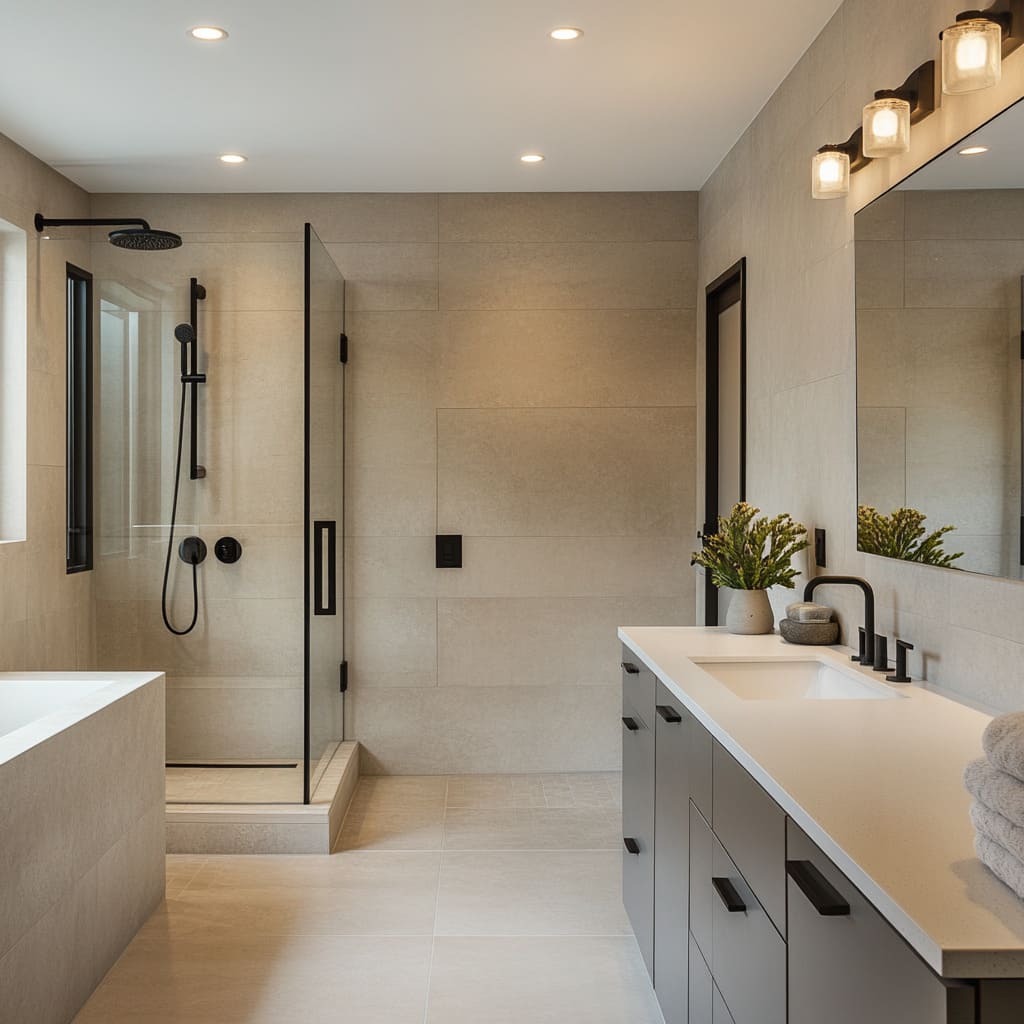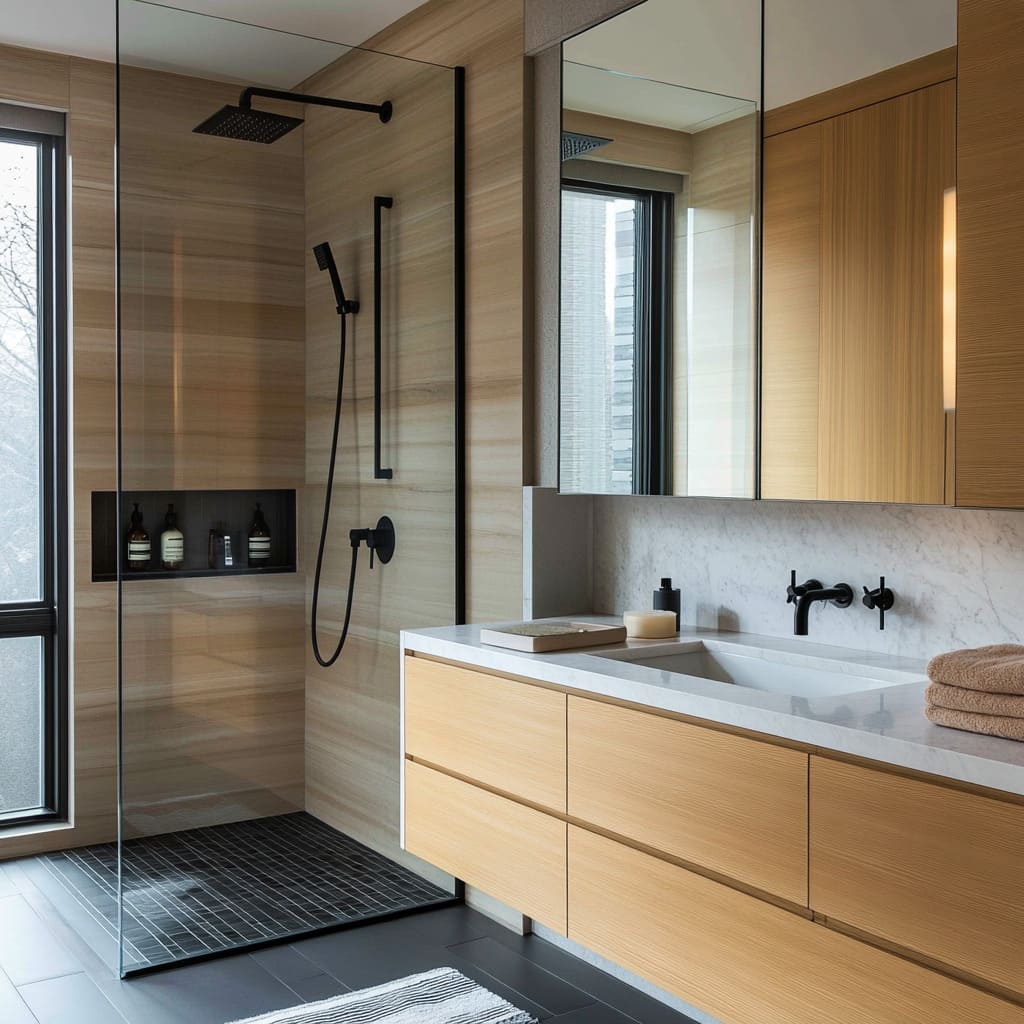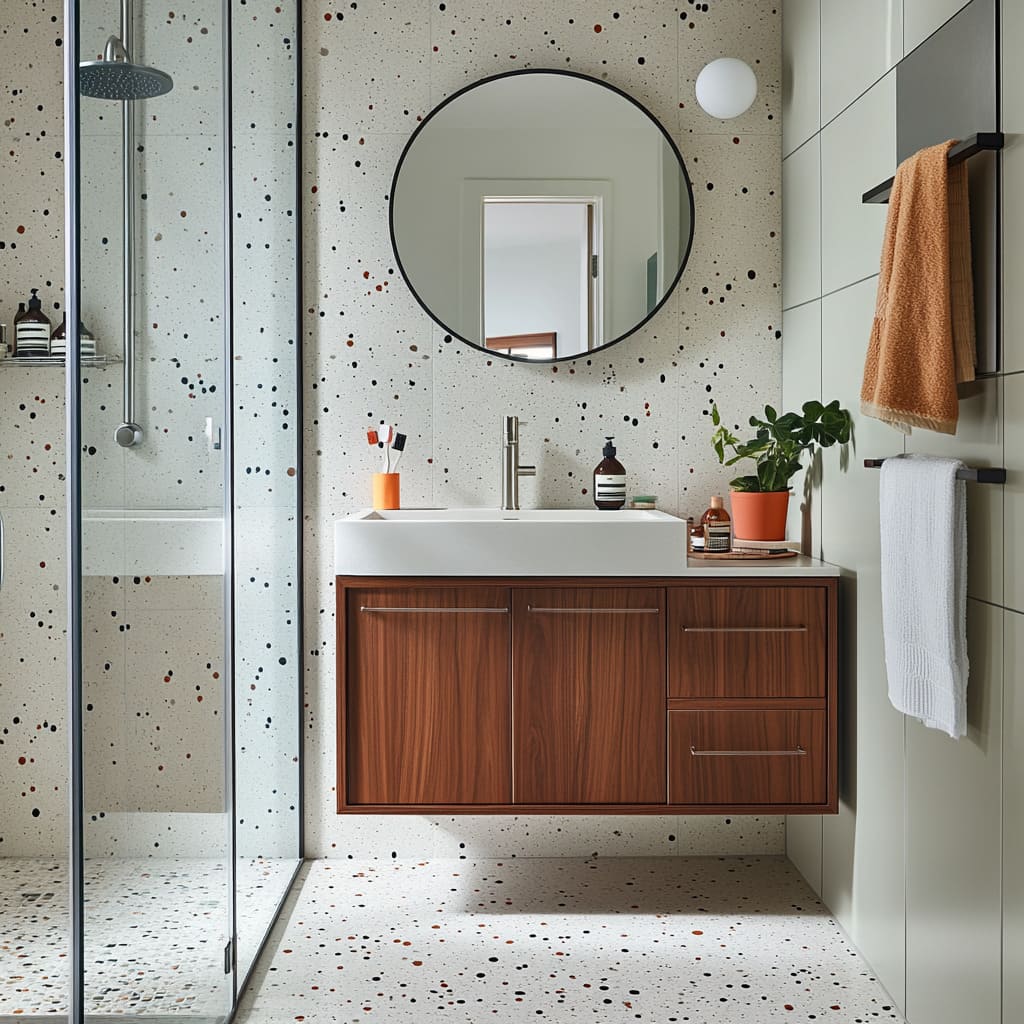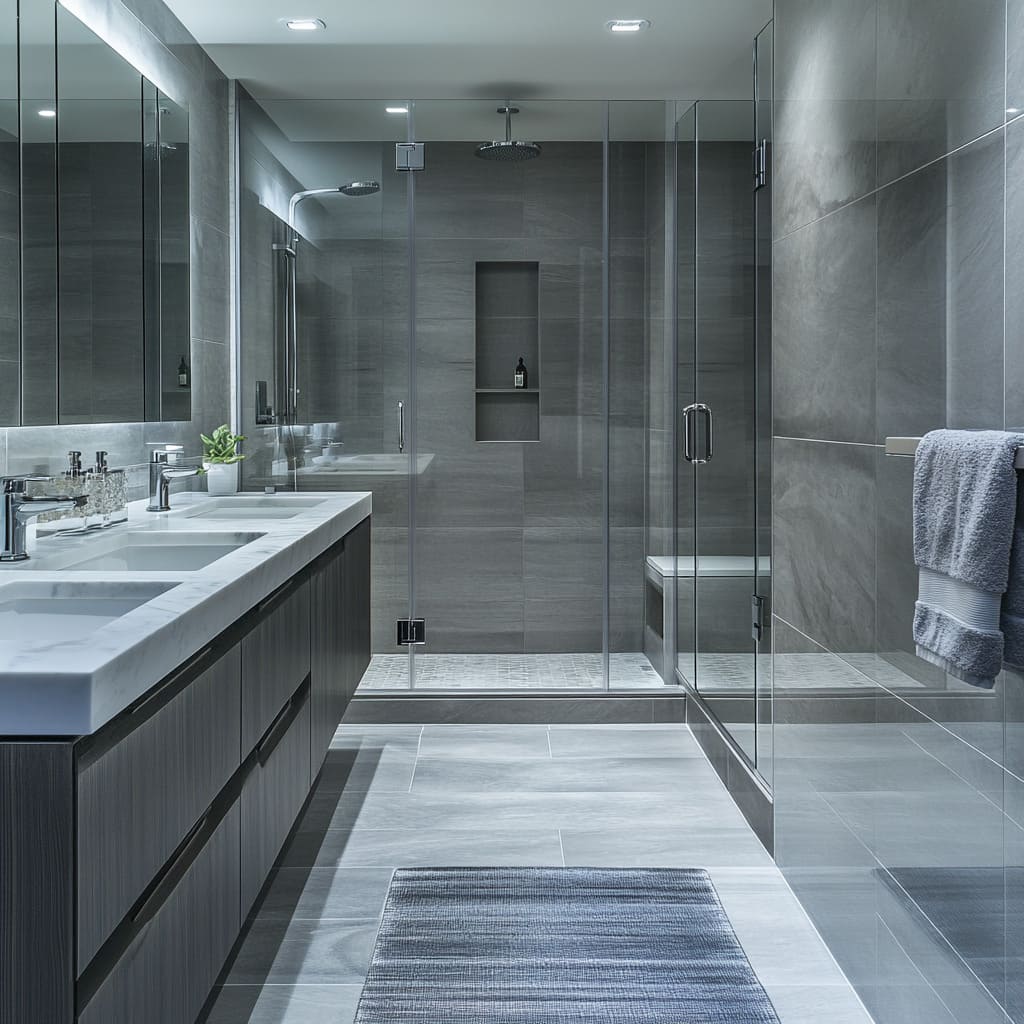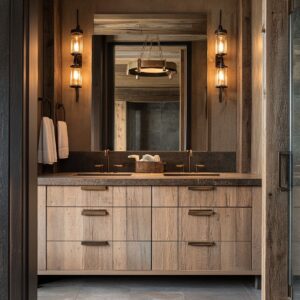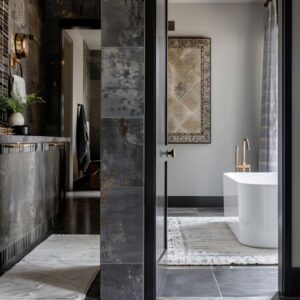In recent years, Waterproof PVC Wall Panels have become a favorite choice for bathroom designs, thanks to their blend of practicality and style. Homeowners are increasingly turning to PVC panels as an alternative to traditional materials like tiles or natural stone.
What sets these panels apart is their ability to replicate the look and feel of high-end materials—whether it’s the warm grain of wood or the sleek finish of marble—without the drawbacks of maintenance or cost. Bathrooms, being spaces where moisture is a constant challenge, need materials that not only look good but also stand the test of time.
PVC panels meet this demand effortlessly. They’re known for being water-resistant, durable, and easy to clean, offering a seamless solution for homeowners looking to maintain a stylish and functional bathroom.
In this article, we’ll explore the reasons why PVC panels are gaining ground in bathroom design and look at some key trends driving this shift
Why Choose PVC Wall Panels for Bathrooms?
Advantages of PVC Panels:
Waterproofing:
Bathrooms are naturally high-moisture spaces, so it’s critical to select materials that won’t absorb water or become damaged over time. PVC wall panels excel in this area.
Made from polyvinyl chloride, these panels are inherently waterproof, ensuring that moisture doesn’t seep in and cause structural problems, unlike wood or porous materials that can absorb water and warp. Whether installed in a shower or near sinks, PVC panels hold up incredibly well, keeping your walls protected from potential water damage
Durability:
Another standout feature of PVC panels is their durability. Bathrooms often deal with humidity, steam, and the occasional splash of water, which can spell trouble for traditional materials like wood, which can warp, or tiles, which can crack and foster mold in the grout.
PVC panels, by contrast, resist these challenges. They are built to withstand the wear and tear of daily use, maintaining their appearance and function for years without the need for constant care.
Maintenance:
Cleaning a bathroom regularly can be tedious, especially when dealing with tiles that have grout lines prone to collecting dirt and mildew. PVC wall panels offer a smooth, grout-free surface, which significantly cuts down on cleaning time.
A simple wipe-down with a cloth is all that’s needed to keep these panels looking fresh. Their non-porous surface also means you won’t have to worry about mold or mildew taking hold, something that can be a persistent problem with tiles and wood in a bathroom setting
Cost-Effectiveness:
For homeowners who want the luxurious look of materials like marble or hardwood without the hefty price tag, PVC panels are a fantastic option. They offer a cost-effective way to mimic these high-end materials.
Whether you’re looking to create the rustic ambiance of natural wood or the polished elegance of marble, PVC panels allow you to achieve that look without breaking the bank. Additionally, because they require less maintenance and have a longer lifespan, the long-term savings only add to their appeal
Design Versatility of PVC Wall Panels
Realistic Wood-Effect Panels
Warmth and Texture:
One of the top design trends is the use of wood-look PVC panels, which bring a cozy, organic feel to the bathroom. These panels replicate the texture and grain of natural wood so convincingly that it’s hard to tell the difference without touching them.
Wood-effect panels add warmth and character to what could otherwise be a sterile environment. For example, bathrooms that incorporate rustic wood-effect panels alongside clean white fixtures can create a perfect balance between nature-inspired warmth and modern design.
Unlike real wood, which is prone to damage from moisture, PVC wood-look panels provide the same natural aesthetic without the risk. This makes them perfect for showers and other high-moisture areas where traditional wood might rot or warp.
Natural Aesthetic:
For a bathroom design that feels both timeless and current, combining wood-effect PVC panels with brass fixtures is a popular choice. The wood brings a natural touch to the space, while brass adds a vintage-inspired elegance.
The contrast between the warm tones of the wood and the gleam of brass creates an interesting visual dynamic, making the bathroom feel both inviting and refined. This combination is especially popular in rustic or Craftsman-style bathrooms, where the goal is to maintain a natural aesthetic while ensuring long-lasting durability and functionality
High-Gloss Marble and Stone Effect Panels
Luxury Meets Practicality:
For those looking to create a sleek, modern bathroom, marble-effect PVC panels are an increasingly popular option. These panels offer all the sophistication of real marble without the upkeep.
In spaces where maintenance is key—such as a high-traffic bathroom—PVC is an ideal substitute. The beauty of marble is undeniable, but it can be prone to staining and requires regular sealing.
PVC panels, on the other hand, provide the same luxurious look with none of the hassle. In particular, high-gloss black marble-inspired panels can create a striking, modern space that feels opulent yet is incredibly easy to maintain
Polished Finishes:
Glossy surfaces have made a comeback in bathroom design, and high-gloss PVC panels are leading the charge. These panels add a reflective quality that makes the space feel brighter and more open.
Whether you’re using white marble-effect panels or black stone-look panels, the polished finish helps elevate the bathroom’s overall aesthetic. By reflecting both natural and artificial light, these panels make even smaller bathrooms feel more spacious.
Moreover, their smooth, high-gloss surface is extremely easy to clean, maintaining its shine with minimal effort
Modern Bathroom Layouts with PVC Panels
Frameless Glass Showers Paired with PVC Panels
Open Aesthetic:
Frameless glass showers are a favorite in modern bathroom design because they create an open, airy atmosphere. When paired with seamless PVC wall panels, the result is a bathroom that feels uncluttered and expansive.
PVC panels installed from floor to ceiling contribute to this sense of openness by providing a continuous, unified surface. Without grout lines or tile seams, the space appears sleek and modern, while the glass keeps everything in view.
This combination of PVC panels and glass ensures the shower feels integrated into the bathroom rather than a separate, enclosed area
Full Wall Coverage:
One of the key advantages of PVC panels is their ability to provide full wall coverage, creating a clean, uninterrupted surface. For example, a shower with marble-look PVC panels from the base to the ceiling offers the grandeur of a high-end spa while keeping the maintenance to a minimum.
Showers featuring rainfall showerheads against this kind of backdrop create a luxurious experience, elevating the entire room’s design. The absence of grout lines ensures a sleek finish, enhancing both the visual and practical aspects of the bathroom
Floating Vanities with PVC Wall Backgrounds
Minimalist Appeal:
Minimalism continues to dominate bathroom design, and floating vanities paired with PVC wall panels are a prime example of this trend. By removing legs and bases, floating vanities create a sense of space and lightness.
When installed against wood-effect PVC panels, the result is an inviting, airy bathroom that feels modern but warm. Floating vanities work particularly well with warm wooden finishes that echo the natural tones of the wood-look panels, creating a cohesive and stylish design.
Material Contrast:
The trend of mixing materials is also gaining traction, and PVC panels make this easy to achieve. For example, a floating vanity with a white marble countertop can be paired with wood-effect PVC panels for a design that’s both rich and layered.
The wood-look PVC adds warmth, while the marble countertop brings an element of luxury. The chrome fixtures on the vanity further enhance the contrast, ensuring that the space feels well-balanced and sophisticated without overwhelming the senses
Trends in Bathroom Fixtures to Complement PVC Panels
Brass and Matte Black Fixtures
Timeless Elegance:
The combination of brass fixtures with wood-look PVC panels is becoming a go-to for creating bathrooms that feel timeless yet current. Brass, with its soft golden hue, adds a touch of classic elegance to the space, especially when paired with the rustic warmth of wood-effect PVC.
This combination creates a bathroom that feels both nostalgic and modern, balancing old-world charm with contemporary design.
Functional Sophistication:
On the other end of the spectrum, matte black fixtures have emerged as a popular choice for those seeking a more modern, sophisticated aesthetic.
When paired with high-gloss marble-inspired PVC panels, matte black showerheads, faucets, and towel racks provide a bold contrast. This pairing creates a sleek, upscale bathroom with a minimalist edge.
The smoothness of the glossy PVC walls against the matte fixtures ensures a design that’s visually intriguing without feeling busy
Wall-Mounted and Freestanding Fixtures
Sleek and Practical:
Wall-mounted faucets and freestanding bathtubs have become key features in modern bathrooms using PVC panels. Wall-mounted fixtures maintain a clean, streamlined look, ensuring the bathroom feels uncluttered.
This is particularly important in smaller spaces where every inch counts. For example, a wall-mounted faucet set against high-gloss PVC panels keeps the countertop clean and spacious while adding a contemporary touch.
Freestanding bathtubs, on the other hand, are perfect for larger bathrooms looking to make a statement. When paired with wood-look PVC panels, a freestanding tub can create a serene focal point, blending the modern appeal of the tub with the natural warmth of the wood.
The result is a space that feels both stylish and practical, where every element serves a purpose without sacrificing design
Integrating Natural Light and Ambient Lighting with PVC Panels
Enhancing Natural Light with Glossy PVC Panels
One of the standout qualities of high-gloss PVC panels is their ability to reflect natural light, which can make a significant difference in a bathroom’s overall ambiance. Bathrooms, especially those with limited space, benefit immensely from materials that can amplify the available light, and glossy PVC panels excel at doing just that.
When natural light hits these panels, it bounces off the surface, creating an illusion of more space and enhancing brightness throughout the room
For bathrooms equipped with floor-to-ceiling windows, the effect is even more dramatic. Natural light pours in through these expansive windows, and the glossy surface of the PVC panels works to spread that light evenly throughout the space.
This gives the room an airy and open feel, turning even compact bathrooms into inviting, light-filled sanctuaries. The reflection from the panels also highlights other design elements in the room, ensuring that the space feels dynamic and alive.
Choosing the right panel color can also enhance this effect. Light-colored PVC panels, such as those mimicking marble or soft neutrals, will maximize the reflective properties of natural light, while darker, high-gloss options, like black or deep grays, add contrast without sacrificing brightness, creating a balance of light and shadow
Ambient and Recessed Lighting Trends
While natural light is a fantastic way to brighten up a bathroom, effective use of ambient lighting is crucial for creating warmth and atmosphere, especially during evening hours or in windowless spaces. The soft glow of well-placed lights brings out the best in the glossy surfaces of PVC panels.
Wall-mounted sconces positioned next to mirrors or strategically placed above the vanity offer both functional lighting and aesthetic appeal. Their soft glow enhances the reflection on PVC panels, making the entire room appear more welcoming
Recessed ceiling lights are another popular trend in bathroom design. These lights provide a clean, streamlined look, ensuring that nothing distracts from the beauty of the wall panels or fixtures.
By illuminating the room evenly without casting harsh shadows, recessed lighting plays an essential role in maintaining the brightness created by reflective PVC panels. These lights work in harmony with the high-gloss surfaces, enhancing the sense of spaciousness and highlighting key areas like the shower, vanity, or bathtub
Flooring and PVC Wall Panels: Achieving a Cohesive Look
Flooring That Complements PVC Wall Panels
To achieve a well-balanced bathroom design, it’s essential to ensure that the flooring complements the PVC wall panels. One trend gaining popularity is the use of high-gloss large-format tiles on the floor to mirror the reflective quality of the panels.
This pairing creates a seamless, unified look that amplifies the overall brightness of the space. When both the walls and floors share reflective properties, the light bounces effortlessly, creating an open, clean aesthetic.
For contrast and depth, homeowners often choose light-colored stone-look floors to pair with darker PVC wall panels. This approach adds visual interest by mixing materials, but still keeps the overall palette cohesive.
The soft, matte texture of stone-look tiles provides a subtle contrast to the glossiness of the walls without clashing, balancing the reflective nature of the PVC panels while adding dimension to the design
Unified Design Approach
A key aspect of bathroom design is creating seamless transitions between different surfaces. When choosing flooring materials that complement PVC wall panels, it’s important to consider how these elements will work together to form a cohesive look.
Matching or complementary flooring ensures that the bathroom feels unified, making the space seem larger and more connected. By selecting flooring materials with similar tones or textures to the PVC panels, homeowners can avoid creating jarring breaks between surfaces.
For instance, wood-look PVC wall panels paired with a slightly lighter wood-look floor tile can offer a harmonious, nature-inspired design that feels fluid from one surface to the next. Similarly, using marble-effect PVC panels on the walls alongside matching or lightly contrasting stone tiles on the floor creates a luxurious, cohesive look without overwhelming the space with too many textures or colors
Mixing Materials for a Balanced Aesthetic
When it comes to bathroom design, PVC wall panels offer immense versatility, especially when it comes to recreating natural materials like wood, marble, and stone. This flexibility allows homeowners to mix these materials and create a balanced, multi-dimensional space that feels luxurious without the heavy maintenance or costs associated with traditional materials.
A popular trend involves combining wood-look panels with marble countertops or stone floors to achieve a high-end finish. For instance, the warm, rustic appeal of wood-look PVC panels can be paired with the cool, refined elegance of a marble countertop to create contrast.
This combination brings depth to the bathroom’s design, with each material complementing the other. Similarly, using stone-look flooring alongside wood-effect wall panels ensures a balanced aesthetic that feels grounded and cohesive
By blending different materials in this way, homeowners can enjoy the beauty and texture of multiple surfaces, creating a bathroom that feels both dynamic and thoughtfully designed. PVC panels allow for this kind of experimentation without the need for expensive materials, offering a budget-friendly solution with endless design possibilities
Eco-Friendly and Budget-Conscious Benefits of PVC Panels
Sustainability
One of the lesser-known benefits of using PVC wall panels is their eco-friendly nature. Compared to materials like natural stone or wood, which require extensive extraction and processing, PVC panels are a more sustainable choice.
Producing these panels uses fewer resources and creates less waste, making them a more environmentally conscious option for bathroom renovations. Additionally, because PVC panels are incredibly durable and resistant to wear, they need to be replaced far less frequently than tiles or wood, further reducing waste over time.
For homeowners looking to reduce their environmental impact without sacrificing style, PVC panels offer an excellent compromise. Whether you’re interested in a marble-look or wood-effect, PVC panels provide the visual appeal of these materials without contributing to deforestation or quarrying
Cost Efficiency
From a financial standpoint, PVC panels are a budget-conscious solution for achieving a luxurious bathroom design. Real marble or hardwood can be costly, both in terms of upfront expense and ongoing maintenance.
However, PVC panels offer a much more affordable alternative while still delivering the high-end look many homeowners desire. In terms of installation, PVC panels are quicker and easier to install compared to traditional tiles or natural stone, which can reduce labor costs.
Additionally, because they don’t require grouting or sealing, the long-term savings on maintenance can be significant. When comparing the initial cost and long-term savings of PVC versus natural materials, PVC often comes out as the smarter financial choice without compromising on design
Expert Tips for Installing PVC Wall Panels in Bathrooms
DIY vs. Professional Installation
One of the benefits of PVC wall panels is that they’re relatively easy to install, making them an ideal choice for DIY enthusiasts.
For those comfortable with home renovations, installing PVC panels can be a straightforward project, especially if the walls are properly prepared and measured. Panels often come with a click-and-lock system, making the process faster and more manageable compared to tile installation, which involves grouting and careful alignment.
However, for more complex bathroom designs or for homeowners who prefer precision, hiring a professional might be the better route. A professional installer can ensure that the panels are installed correctly, with all waterproofing properly applied, which is especially important in wet areas like showers
Maintenance Tips
Maintaining the glossy appearance of PVC wall panels is incredibly simple compared to other materials. To keep them looking fresh, all that’s needed is a damp cloth or mild cleaner.
Since PVC is non-porous, it’s resistant to staining, so dirt and grime don’t easily adhere to the surface. This also means that there’s no need for harsh chemical cleaners, which can damage more sensitive surfaces like marble or wood.
To prevent scratches, it’s advisable to use soft cleaning tools like sponges or microfiber cloths. With these easy-to-follow maintenance tips, PVC panels can maintain their shine and durability for many years without requiring extensive effort
Conclusion
Waterproof PVC wall panels have made a significant mark on bathroom design, providing a blend of style, durability, and practicality that’s hard to beat. From their ability to mimic high-end materials like wood and marble to their eco-friendly and budget-conscious benefits, these panels offer a comprehensive solution for homeowners looking to renovate their bathrooms without breaking the bank.
Ultimately, PVC panels are more than just a trend—they’re a practical choice for anyone looking to combine luxury and functionality in their home. Whether you want the warmth of wood, the elegance of marble, or a seamless, easy-to-maintain surface, PVC offers the versatility and durability needed to create the perfect bathroom space

